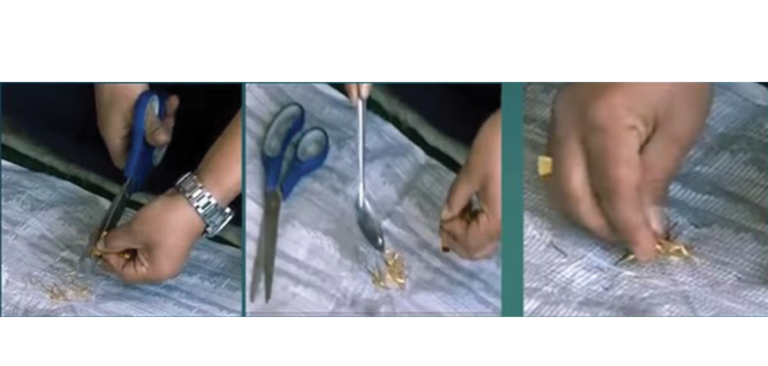
People of ethnic community have been traditionally engaged in gold plating business for centuries, however they are unaware of the fact that they come close to hazardous elements and mercury amalgam while continuing their business.
Both men and women are involved in gold plating business.
The most dangerous part of the gold plating occupation is that high level of mercury exposes while they apply gold on the metal statue.
Ram Charitra Sah, executive director and environment scientist of Centre for Public Health and Environmental Development (CEPHED), said that more than 400 families are involved in gold plating business but they are unaware about the ill effect of mercury.
Sah said that many people are directly exposed to mercury during gold plating process.
World Health Organisation (WHO) has considered mercury one of the top 10 chemicals or groups of major public health concern.
It may cause serious health problems, leaving toxic effects on the nervous, digestive system, lungs, kidneys, skin and eyes even small amounts of mercury exposure.
Thus, the people engaged in the business need to pay urgent attention to improve their workplace to remain safe from risks
associated with the use of mercury, he added.
He further said that bio-monitoring of mercury among 20 metal plating female workers in Patan area revealed that they were exposed to high level of mercury.
The average level of exposure in Patan is 3.62 ppm, whichis higher than the exposure in Africa, USA and Europe. The average exposure is 1 ppm.
CEPHED had carried out the study on mercury contamination in the water discharged from metal plating workshops in 2020 and it was found that water samples released from workshops had very
high mercury contamination ranging from 0.627mg/L to 11478 mg/L which is 62.7 to 1147800 times more than the Nepal government
Generic Standard of Waste Water effluent for waterways as well as standard for in land (0.01mg/L) discharge.
The untreated water has been discharged on inland surface or small drainage leading to river pollution.
Nepal has signed the UN Minamata Convention on mercury in October 2013.
Recently, the National Academy of Science and Technology (NAST) has organised science dialogue jointly with CEPHED and Federation of Handicraft Association of Nepal (FHAN) on the issues of mercury in gold plating.
They said that the issue is very crucial and urgently needed to fill the longstanding gap of technological development to capture mercury that is being released into the environment so as to protect human health and environment preserving unique traditional practices of gold plating business.
It will also help the government implement the Minamata Convention on mercury, he said.
Mercury Convention needs to be ratified with no exemption to gold plating, and robust and efficient technology invention and transfer for mercury-free gold plating and efficient mercury capture needs larger study on environment contamination and awareness needs to be raised among the workers about the hazardous effect of mercury, Sah said.
Source : TRN,






